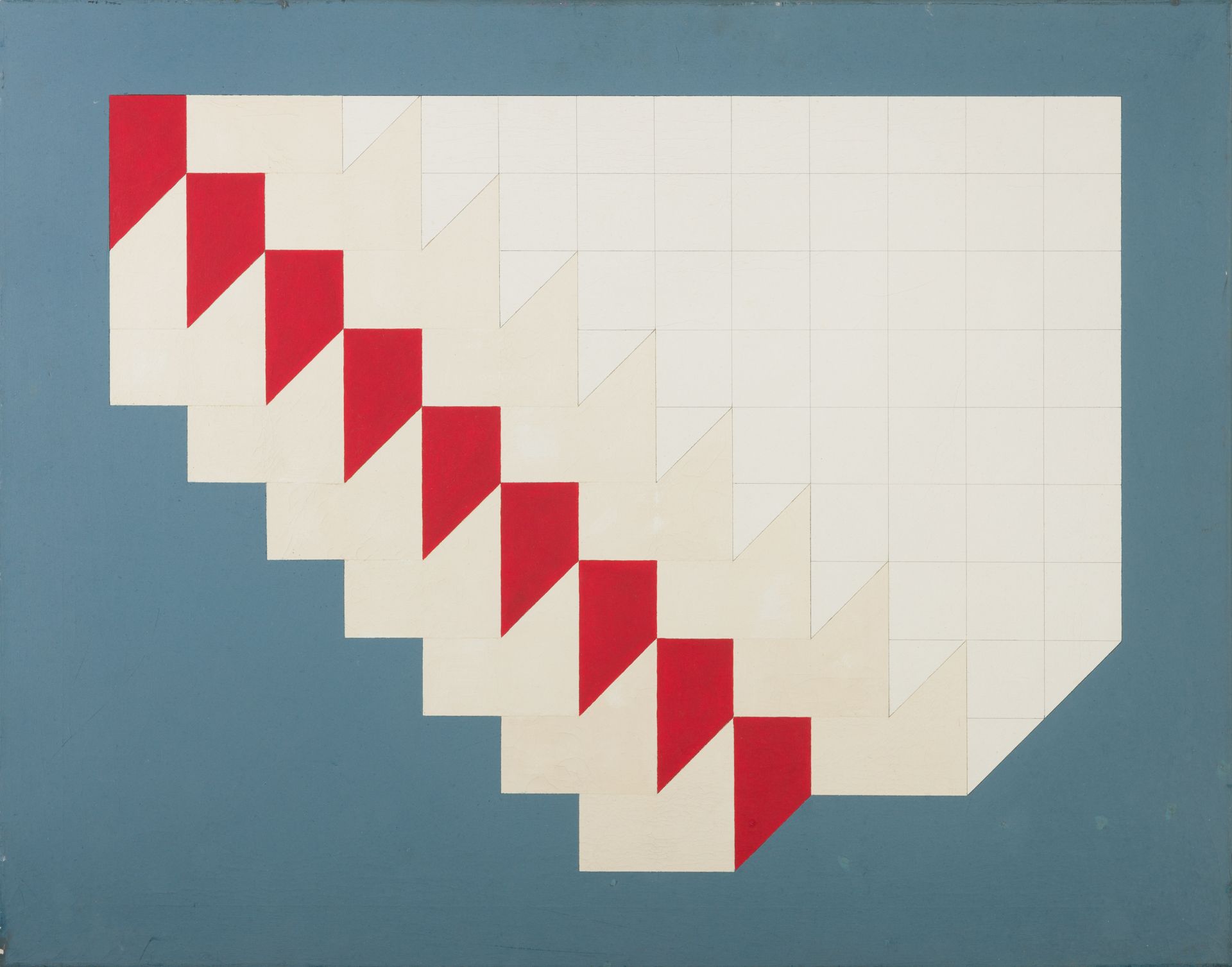
(Thanks to the Carlo Desireau Archive)
Struttura 75/2 with which Carlo Desireau entitled the work in the Premio Termoli Collection is part of a group of works that are the result of processes and studies undertaken by the artist in the early 1950s.
Over time, Desireau developed a very personal constructive language: on the one hand, he interposed himself between painting and graphics; on the other hand, he moved towards chromatic effects of visual communication.
From the 1950s–also thanks to the social and political stimuli in Florence–Desireau moved closer to Abstract Art, which in Florence counted on Vinicio Berti, Bruno Brunetti, Gualtiero Nativi and Alvaro Monnini. His works from that period are based on tight sign frames that gradually become more geometric and sharper over the course of the 1960s.
Desireau subsequently focused on a play of chromatic solids and voids that would transform the structures into compositions of visual three-dimensionality. As in Struttura 75/2, the particularity of these works lies in the artist’s decision to leave visible the geometric patterns that silently punctuate the various modules, thus creating visual-psychological effects.
In the series of works from the 1990s, the square becomes the absolute protagonist. It is positioned in a succession of horizontal and vertical lozenges and forms structures like in a floor. It becomes the focus of the canvases.
His latest works “have the merit of not asking for references on concrete formal subjects, being themselves concrete in form and easily readable" (Enzo Giani, Un artista noto agli addetti ai lavori [An artist known to the professionals] 1994). Connoted by a prevalent verticality, the structures he drew between the late 1990s and the early 2000s oscillate between simple compositions and vibrant colours (mainly white, red, grey and blue).
«It is a painting, a genre, which strikes, captivates with its own magical charm even before it speaks and “explains itself”, before its true meaning is penetrated» (Gilda Chepes, Borsa d'Arte, 1965). The Florentine artist has inevitably and intelligently drawn on the experiences of his time, assimilating them in his works without, however, including too many spectacular elements of reference to the past.
Carlo Desireau was born in Florence in 1921 and at the beginning of his artistic career he set up his own studio in Via del Palazzuolo, where he would collaborate with artists from the informal scene. He entered the Florentine artistic debate as a self-taught artist thanks to the Studio d'Arte il Moro collective and, from the end of the 1950s, took part in various exhibitions organised by Fiamma Vigo’s Numero Gallery. He made his debut with a solo exhibition at the Por Santa Maria Gallery in 1963 and the following year at the Jolly Gallery in Pistoia.
In 2015 a Carlo Desirò Fund was established at the State Archives of Florence, a city that still remains the cradle of the artist’s creative process and that paid homage to Carlo with presentations, solo projects and appearances at national and international exhibitions.